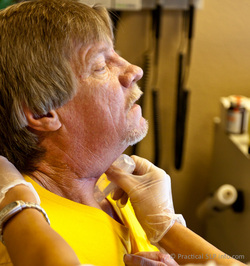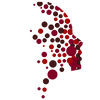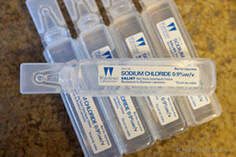|
A saline bullet is a term used to describe a small vial of sterile saline. These can range in size from 5-30ml, although the SLP staff will typically prescribe the 30 ml size for use.
Laryngectomy patients using an HME typically will not need saline bullets once their HME use is initiated and consistent. Directions for use can be found here. |
Indications
Saline bullets are used to provide quick, temporary moisture to the pulmonary air passages and lungs and are most commonly used to correct issues related to inadequate humidification for patients with artificial airways (tracheostomy) or laryngectomees not regularly using HMEs.
Saline bullet utilization can be helpful in loosening dried mucous and mucous plugs as well as restoring moisture to dry airways. These should only be used on the advice of your doctor or SLP staff.
Directions for Use with a 30ml vial

Position the tip of the vial into the stoma, pointing downward. While inhaling, squeeze firmly on the vial, releasing ~1/3 or 10ml at one time. This will likely cause coughing. After secretions have been cleared, repeat this until the vial is empty, usually 3-4 times in total.
It is important to use saline bullets in the morning. This will help to moisturize the air passages and clear any dry secretions so you can be more comfortable through your day.
Your doctor or SLP staff will advise you on how often and when to use saline bullets if you require more that once daily. These can be used safely more than once daily, but you may be prescribed a specific schedule.


